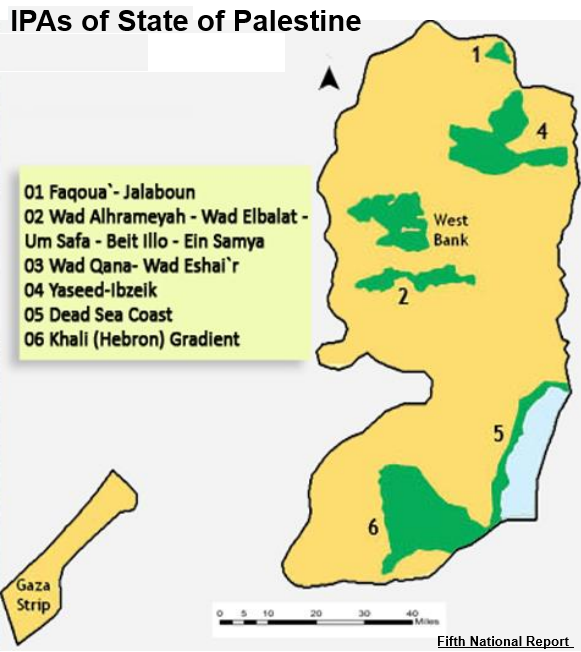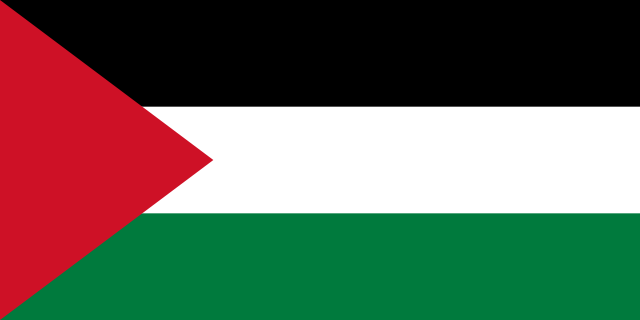Important Plant Areas (IPAs)
Important Plant Areas (IPAs) are key sites for exceptional botanical richness, rare, threatened and socio-economically valuable plant species and rare and threatened habitats. Important Plant Areas is a programme set up in the UK, by the organisation Plantlife, to provide a framework for identifying and maintaining the richest sites for plant life, possibly within existing protected areas; though the protection of the IPA itself is not legally enforced.
Al Shaikh (2011) identified six Important Plant Areas of the West Bank, these areas host a variety of plant species many are considered endemic to Palestine. In general, the Palestinian IPAs are dominated by maquis vegetation, with trees such as the Palestinian Pistachio (Pistacia palaestina), Palestine Buckthorn (Rhamnus palaestinus), Palestine Oak (Quercus calliprinos) and Boissier Oak (Q. boisseri). But we still need many studies to determine the important plant areas in the State of Palestine, especially after the existence of a new Protected Areas Network built on scientific foundations and international standards.
Important plant areas in the West Bank and their endemic or protected species:
- Faqqua'/Jalaboun (Jenin): Delphinium ithaburense, Iris haynei, Salvia pinnata
- Wadi Al Haramiya/Wadi El-balat/Umm Safa/Beitillu/ Ein Qiniya (Ramallah): Juncus fontanesii, Linum bienne, Convolvulus scammonia, Centaurium tenuiflorum
- Wadi Qana/Em Rihan (Salfit, Jenin, Qalqilya, Tulkarm): Juncus bufonius, Lythrum hyssopifolium, Tulipa agenensis.
- Northern Eastern Slopes (Nablus- Tubas): Ferula orientalis, Iris atrofusca, Iris lortetii, Biarum pyrami, Teucrium montbretii, and Asplenium sagittatum.
- Dead Sea Coast (Bethlehem - Jericho): Salvadora persica, Anvillea garcinii, Pulicaria incisa
- East of Hebron: Iris atrofusca, Iris vartanii, Petrorhagia arabica and Suaeda palaestina.
See References in the Publications

